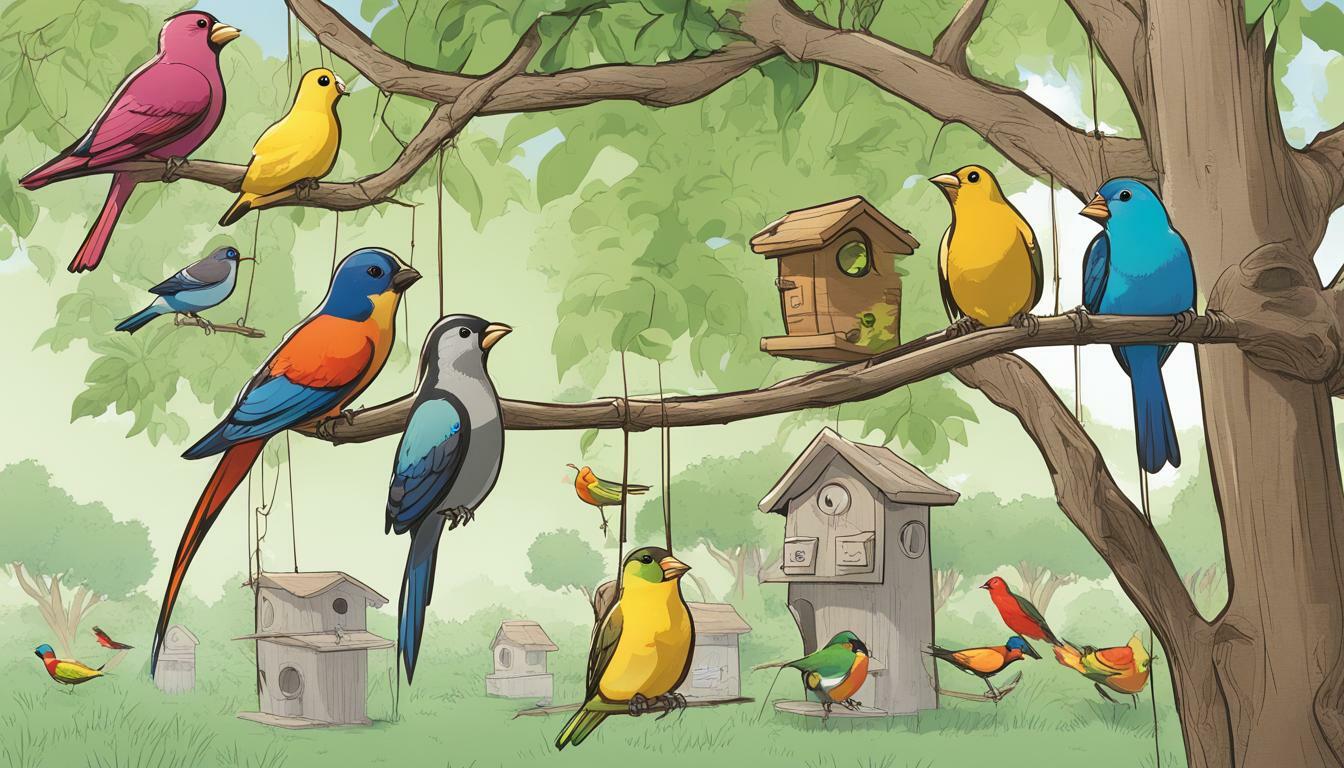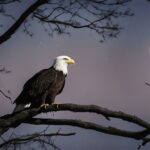If you’re an avid bird watcher, you may be considering adding a hanging bird house to your backyard. But, before you do, it’s important to understand the preferences and habits of birds when it comes to these structures.
Firstly, hanging bird houses can be quite attractive to birds. They provide a safe and secure environment for nesting and can also serve as a convenient food source for birds. However, not all birds are attracted to hanging bird houses, so it’s important to choose the right one based on your local bird population.
When selecting a hanging bird house, it’s also important to consider the design and features that will suit the birds in your area. Birds have different preferences when it comes to the size of the entrance hole, the type of materials used, and the location of the bird house.
Proper placement of the hanging bird house is also crucial. It should be placed at the right height, in a location that’s sheltered from predators, and near a water and food source.
Key Takeaways:
- Birds can be attracted to hanging bird houses, but it depends on the local bird population
- The design and features of the bird house should suit the birds in your area
- Proper placement is crucial for attracting birds to the hanging bird house
- Choosing the right hanging bird house can create an inviting and vibrant backyard bird haven
Understanding Bird House Preferences
When it comes to bird houses, understanding bird behavior and preferences is critical. Knowing what birds like and how they behave will help you choose the right type of bird house and properly hang it.
Birds can be particular about where they decide to nest, and they have specific preferences that can influence their choices. Some species prefer to nest in open areas, while others look for protection from predators. The size of the entrance hole also plays a crucial role in attracting certain types of birds.
It’s also important to consider the material of the bird house. Some birds prefer wooden houses, while others like those made of metal or plastic. Understanding the habits of specific bird species can help you determine the best choice.
Bird House Hanging Efficacy
The way you hang your bird house also affects its efficacy. The height, location, and orientation of the bird house can all impact its attractiveness to birds. For example, some birds prefer houses that are hung at eye level, while others like them high up in trees or mounted on a pole.
Additionally, proximity to food and water sources is crucial when hanging bird houses. You should consider placing the bird house near a bird feeder, bird bath, or other areas where birds tend to congregate.
| Bird House Preferences | Bird House Habits |
|---|---|
| Bird house material | Some birds prefer wooden houses, while others like those made of metal or plastic. |
| Entrance hole size | The size of the entrance hole can determine what types of birds will use the house. |
| Placement | The height, location, and orientation of the bird house can affect its attractiveness to birds. |
| Proximity to food and water sources | Birds are more likely to use a bird house if it’s near a bird feeder or bird bath. |
By understanding the preferences and habits of birds, you can choose the right type of bird house, properly hang it, and create an inviting environment for our feathered friends.
Attracting Birds with Hanging Bird Houses
Once you have selected the perfect hanging bird house, the next step is to attract birds to it. Proper placement is essential for making your bird house attractive to birds.
When choosing a spot to hang your bird house, consider the height. Most birds prefer bird houses that are hung at least six feet off the ground. This height helps protect the birds from predators while still providing a clear view of the surrounding area.
The location of your bird house is also important. Birds are more likely to use bird houses that are placed in areas with plenty of food and water sources nearby. Try placing the bird house near a bird feeder or bird bath for easy access.
Creating an inviting environment for birds is also crucial. Planting trees and shrubs around your bird house will provide birds with plenty of cover and protection. Additionally, adding a water feature such as a fountain or small pond can make your backyard even more attractive to birds.
By implementing these tips, you will improve the attractivity of your hanging bird house and soon enjoy the sight of various bird species visiting your backyard.
Choosing the Right Hanging Bird House
When it comes to selecting the perfect hanging bird house for your backyard, there are several factors to consider. The right bird house can make all the difference in attracting birds and providing a safe and comfortable environment for them to nest.
Types of Bird Houses
There are a variety of bird houses available, each with its own unique features and design. The two most common types of bird houses are wooden and plastic. Wooden bird houses are a popular choice due to their natural look, but they require regular maintenance to ensure they stay in good condition. Plastic bird houses, on the other hand, are durable and weather-resistant, making them a low-maintenance option.
Size Matters
The size of your bird house is also an important consideration. The house should be large enough to accommodate the species of bird you want to attract, but not so large that it becomes a target for predators. Generally, a bird house with an entrance hole diameter of 1-1/2 inches will attract small birds like chickadees and wrens. Larger birds like bluebirds and woodpeckers will require a larger entrance hole, around 2 inches in diameter.
Location, Location, Location
The location of your bird house can also affect its suitability. The house should be placed in a quiet and safe area, away from potential predators like cats and squirrels. It should also be placed at the appropriate height for the species of bird you want to attract. Some birds prefer their houses to be mounted on trees, while others like them to be hung from a hook or pole.
Other Considerations
Other important factors to consider when choosing a bird house include ventilation, drainage, and cleaning access. Proper ventilation will help regulate the temperature inside the house, while drainage will prevent water from collecting inside. A bird house with easy access for cleaning will make maintenance a breeze.
By taking these factors into consideration, you can choose the perfect hanging bird house for your backyard. This will ensure that your feathered friends are safe, comfortable, and happy in their new home.
Popular Hanging Bird Houses
If you’re looking for a hanging bird house that’s proven to attract a wide range of bird species, you’re in luck! There are several popular options on the market that bird watchers and enthusiasts rave about.
1. The Wren House
The Wren House is a great choice for those looking to attract smaller bird species. The small entrance hole and cozy interior make it a favorite among wrens, chickadees, and finches. Made from durable cedar wood, it’s built to last and can easily be hung from a tree or post.
2. The Bluebird House
Bluebirds are known for their beautiful color and cheerful song, and the Bluebird House is designed to attract them to your backyard. With a larger entrance hole and spacious interior, it also accommodates other medium-sized birds, such as tree swallows and titmice. This house is typically made from wood or PVC, and can be mounted on a pole or tree trunk.
3. The Hummingbird House
Hummingbirds are a delight to watch, and the Hummingbird House is a great way to attract them to your backyard. These tiny birds prefer a hanging bird house that is open on both ends, allowing them to easily fly in and out. The house should also have a long, thin entrance hole and be made from materials that can withstand the weather. Hang it from a tree limb or patio cover for the best results.
4. The Martin House
If you’re interested in attracting larger bird species, such as purple martins, then the Martin House is the way to go. This is a multi-unit bird house that can be mounted on a pole and offers room for several families of birds. It’s typically made from wood or plastic and requires a bit more maintenance than smaller houses, but it’s well worth it for the opportunity to watch these impressive birds in action.
By choosing one of these popular hanging bird houses, you’re sure to attract a variety of feathered friends to your backyard. Whether you’re a seasoned bird watcher or just starting out, these houses provide a great opportunity to observe these beautiful creatures up close.
Conclusion
By now, you should be convinced that hanging bird houses are an excellent way to attract a variety of bird species to your backyard. Remember that different birds have different preferences, so it’s important to select a bird house that is suitable for the types of birds you want to attract. When it comes to placement, consider the height, location, and proximity to food and water sources. And don’t forget to create an inviting environment for birds by adding flowers and other plants to your backyard.
Overall, hanging bird houses can be a fun and rewarding addition to your backyard. Not only do they attract beautiful and interesting birds, but they also provide a sense of satisfaction and enjoyment for bird watchers and enthusiasts. So why not give it a try and see what feathered friends you can attract to your yard?
Do Birds Communicate with Each Other about Food Sources?
Birds and food communication play a vital role in their survival. They use various signals to convey information about food sources, such as calls, songs, and body language. For instance, some birds emit specific vocalizations to alert others about nearby food. This efficient communication system ensures a continuous supply of food and enhances their chances of survival in the ever-changing natural environment.
FAQ
Q: Do birds prefer hanging bird houses or other types of bird houses?
A: Birds have different preferences when it comes to bird houses, but many species are attracted to hanging bird houses. These structures provide safety from predators and can be placed in various locations, making them a popular choice for many bird species.
Q: How high should I hang a bird house?
A: The height at which you should hang a bird house depends on the species you want to attract. Generally, it is recommended to hang bird houses at least 5-6 feet off the ground. However, some species may prefer higher or lower placements, so it’s important to research the specific needs of the birds you want to attract.
Q: What features should I look for when choosing a hanging bird house?
A: When selecting a hanging bird house, consider factors such as the size of the entrance hole, the size of the bird house, the material it is made of, and any additional features that may be attractive to birds, such as perches or ventilation. Different bird species have different preferences, so it’s important to choose a bird house that suits the species you want to attract.
Q: How can I make my hanging bird house more attractive to birds?
A: To make your hanging bird house more attractive to birds, ensure it is placed in a suitable location. This includes positioning it near food and water sources, providing proper shelter from the elements, and ensuring it is secure and stable. Additionally, creating a welcoming environment with native plants, bird baths, and bird feeders can further enhance the attractiveness of your hanging bird house.
Q: Can I attract a variety of bird species with a hanging bird house?
A: Yes, hanging bird houses can attract a wide variety of bird species, including songbirds, finches, wrens, and more. By choosing the right bird house, providing suitable habitat, and offering the necessary resources, you can create a diverse and thriving bird community in your backyard.











